The Oscar-nominated directors of photography of Mudbound and Brokeback Mountain - who both launch their own feature debuts at TIFF this year — compare their experiences making their feature directing debuts.
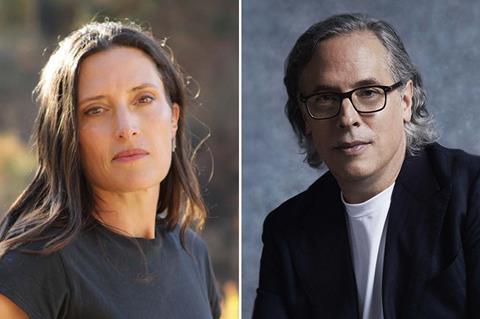
Among this year’s Toronto world premieres are the feature directing debuts of two acclaimed cinematographers. America’s Rachel Morrison makes the transition with The Fire Inside, written and produced by Barry Jenkins and based on the true story of Michigan high-schooler Claressa Shields (played by actress/singer Ryan Destiny), who in 2012 became the first US woman to win an Olympic gold medal in boxing, with the help of her tough-love coach (Brian Tyree Henry). The Amazon MGM Studios feature is set for theatrical release this Christmas, following its TIFF bow on September 7 in Special Presentations.
With a background in photojournalism, Morrison is best known for shooting Black Panther, Fruitvale Station(both for writer/director Ryan Coogler) and Mudbound, which in 2018 made her the first woman ever nominated for the cinematography Oscar. She has also directed episodes of streaming series including The Morning Show and The Mandalorian.
Mexico’s Rodrigo Prieto takes the director’s chair with Pedro Páramo, adapted by Spanish filmmaker Mateo Gil from Juan Rulfo’s 1955 novel, a Mexican literary classic. The film, coming to Netflix later this year and premiering at TIFF in Platform on September 8, centres on a man whose visit to the remote village of his birth becomes a surreal encounter with the ghosts of the past and the legacy of his father’s quest for wealth and power.
Prieto broke through in his native Mexico as director of photography on projects including Alejandro Gonzalez Iñarritu’s Amores Perros in 2000. He has since become one of the US industry’s most in-demand behind-the-camera talents, shooting projects as varied as Birdman (also for Iñarritu), Argo and Barbie. He has been Oscar-nominated for his cinematography on three of his four films with Martin Scorsese — Silence, The Irishman and Killers Of The Flower Moon — and on Ang Lee’s Brokeback Mountain. He has previously directed the shorts Likeness and R&R.
Morrison and Prieto came together in a virtual conversation hosted by Screen International two weeks before their films screened in Toronto.
Screen International: Why now and why these projects to make your first features as directors?
Rachel Morrison: I’m a filmmaker first and foremost. I was looking at scripts and if I found the right project to shoot I would shoot; if I found the right project to direct I would direct. It just happened that the project I felt passionate about and felt was additive in the universe was a project that came to me to direct.
Rodrigo Prieto: It was a script that came to you then, and you fell in love with it?
Morrison: Yeah. It came to me from Barry Jenkins and Elishia Holmes, our other producer, and I could see why they had me in mind for it. There were a lot of things that just felt right for me. And the why now…? Some of it is that I want to keep learning. I wanted to understand the post-production side of things. Also I did have a very singular vision for this film and felt like I could be a person to help breathe life into it.
Prieto: The same thing in my case. I’ve always considered myself a filmmaker more than anything. I love being a cinematographer but I approach cinematography in my mind as a filmmaker. This fell in my lap. I got a call from Stacy Perskie, a friend and producer, who told me Netflix bought the rights for the novel Pedro Páramo. It’s a book that most young people in Mexico read in high school or college and I knew it very well and liked it. So I said yes. I didn’t really think about it.
What was making the transition from cinematographer to director like for both of you?
Prieto: You’ve directed a bit of episodic [television], Rachel, so it must have been pretty seamless for you?
Morrison: The bigger transition was when I first started directing episodic, and that was about learning to work with actors. This experience has cemented my love of working with actors. The gap that I still had to close was post-production, because television is the showrunner’s medium, so [as director] you’re not the one recording the score or doing the Foley editing.
There was also the challenge of letting go of the cinematography a little bit. I wanted to challenge myself to take that hat off. It was important to hire a cinematographer that I trusted and respected, and to try not to micromanage their every move.
The other thing that’s actually a big transition for me, and that I’m still wrestling with, is being the face of the thing. I’m so passionate about my film that I will find a way to be that person — but I don’t love public speaking, I don’t love red carpets. That’s the thing I’m most daunted by.
Prieto: I can totally relate to what you’re saying about promotion. I’m a little terrified of it. But the transition to directing felt more seamless than I expected. Part of it is the comfort of being on a set and understanding the crew and what every person does. The big difference is now you’re completely involved in every single facet of the production.
The DoP part of it, I wasn’t willing to let go of completely. So I hired Nico Aguilar, a young DoP who went to film school with my daughter and did some additional photography on Killers Of The Flower Moon. He loved the idea of doing this with me, together, and he brought some great ideas and ways of working that I didn’t know about.
Morrison: It’s interesting to hear that. I chose a cinematographer, Rina Yang, who did things slightly differently than I would have, mostly with regard to lighting. She is known for her commercial and music-video work, which is inherently a bit more stylised. I tend to be very grounded, very naturalistic. Ryan Coogler introduced me to the idea of hiring people who bring different things to the table, so you’re always picking the best ideas, or using one idea to inform another.
Did either of you have director mentors you would go to for advice?
Morrison: Barry Jenkins was my phone-a-friend for this film if I had a question about choosing between two actors or things I needed a little extra insight on. From a general perspective, Ryan Coogler is like the brother I always wanted but never had until I met him. He’s the person I call with the bigger, more existential questions.
Prieto: With the casting and the making of the film, I didn’t reach out to anybody, I just jumped into it. But in post-production, I called many of my director friends: Alejandro Gonzalez Iñarritu, Rodrigo Garcia, Alfonso Cuaron, Greta Gerwig. They all saw cuts of the film and that’s where I got a lot of perspective. I wanted the points of view of people not from the Mexican culture who hadn’t read the novel, which is pretty complicated. I was happy to see that Martin Scorsese, for example, who hadn’t read the novel, understood what was going on.
Did you have to persuade producers or backers to let you direct, or did you have to be persuaded yourselves that you were ready to direct?
Morrison: The latter for me. Almost every director I’ve worked with has said to me, “You think like a director.” You hear that long enough and it starts to percolate, even though there is that part of me that says, “No, I’m good, I love cinematography and my comfort zone is behind the camera.” So it took a chorus of voices to convince me to take that leap. I didn’t have to convince anyone.
Prieto: Same for me. I was pretty lucky that the financing was basically already in place. It was financed and I was ready. Some people have asked me how I dared to tackle this novel, it’s like doing The Grapes Of Wrathas your first film. But it wasn’t scary for me. I guess I didn’t have enough time to get scared.
What kinds of challenges did you face getting your films made?
Morrison: [The Fire Inside] has a complicated backstory because we started pre-pandemic and I had a different co-lead in place, but in the shuffle after the pandemic that actor [Ice Cube] fell out. My lead actress has done some television work and is known in the music space but she’s not a known entity as a theatrical lead actress. There’s something nice about the fact we didn’t have huge names or huge budgets and therefore could do things our way. While it wasn’t a tiny movie by any means, it still had the feel of a scrappy indie with everybody working together in chorus.
Prieto: In our case, the budget was tight but it was just enough. That encouraged us to find creative solutions, which is a cliché but I think it’s true in this case. It’s a surreal story but it has elements of realism, so it’s very complex. And since everybody knows this novel, everybody was so eager to work on it. When I was casting in Mexico, I had my pick from many wonderful Mexican actors.
And I must say, Netflix was very hands-off, in the sense that I didn’t feel any pressure to make [the film] this way or that way. In pre-production, yes, I wanted input and I welcomed it, but in production we were pretty free to figure it out on our own.
Morrison: I think there’s a trust that we get — as we should, we’ve earned it — because of our years and years of set experience. Usually the thing that people worry about with starting filmmakers is do they know how to move the camera, do they know the technical elements. And the fact we have that so buttoned up lets them sleep at night.
Now that you’ve directed your first features, do you want to do more directing, go back to cinematography, or do both?
Prieto: I want to keep shooting. For me, this wasn’t a stepping stone. But I do want to direct some more as well. I just hope that directors don’t start seeing me as a director now — because I love working with directors, I love that collaboration and I love shooting.
I’m a filmmaker that happens to also know how to do cinematography and understands lighting. I love it so much that I don’t want to abandon it. But I do enjoy the idea of being able to tell stories in a more expanded way. So hopefully there’ll be more to come, and, if not, it’s fine, I’m perfectly happy as a cinematographer as well.
Morrison: I feel the same way. I would love to do both. I’m a storyteller first and foremost and I read scripts almost blind, whether it’s to shoot or direct. It’s just: do I want to tell the story, is it additive somehow and am I additive to it somehow?
There is a very real thing that Rodrigo mentioned: the curse of the multi-hyphenate. People love to say things like, “But you’re a director now.” The irony is that having directed has made me so much more empathetic as a DoP and helpful to my directors. Not helpful in the sense that I’m going to direct for you — that’s the last thing I want to do when I’m shooting. I thought my DoP/director relationship was somewhat simple and I never quite understood what they were off doing when they were not with me. And now I get it.
Prieto: I one-hundred percent agree. You know that directors are doing a lot of stuff, but you don’t know it until you’re there and you’re faced with myriad decisions and all the things that are happening. It does create new empathy— not that that didn’t exist beforehand.
I’ve always said that as cinematographer you kind of have to fall in love with your directors, you have to understand their souls and what they want to get out there and be a conduit for that. So now, having directed, I think I can help more because now I’ve experienced that. Like you were saying Rachel: not directing but just understanding their process in a deeper sense.

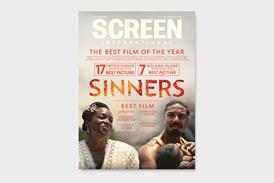


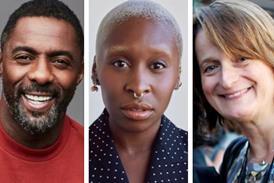









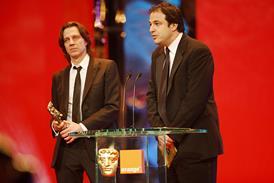
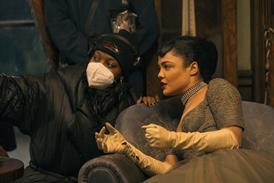







No comments yet